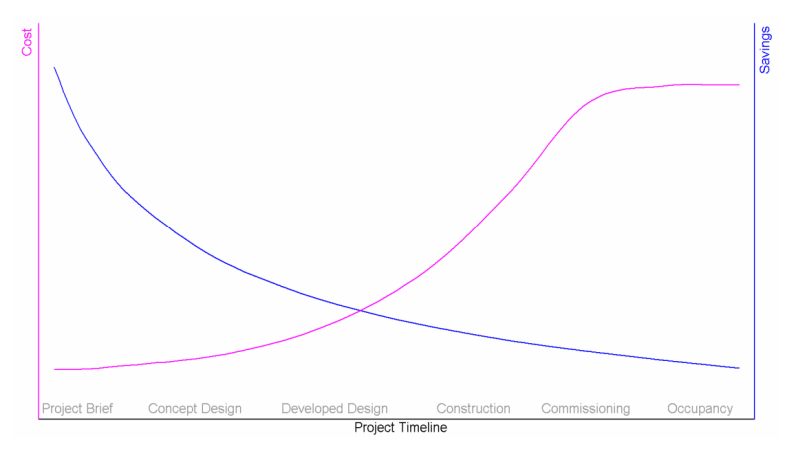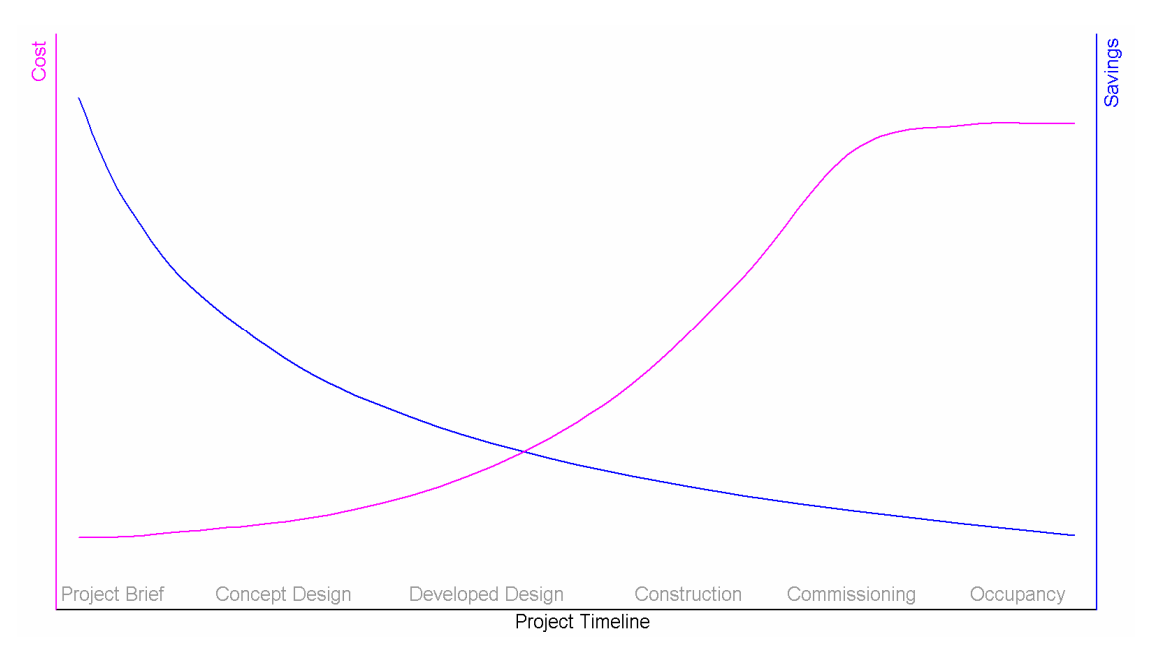Generally, buildings designed using IWBDP are not necessarily more expensive and can even be more cost-effective than conventionally designed buildings.
The Landcare Research Building in Tamaki (see New Zealand case studies section below) was designed and built with no extra costs compared to a conventional process (Landcare Research, 2008). The Mathematics, Statistics and Computer Sciences Building at the University of Canterbury was designed and built for less than a similar conventional building on the campus.
Using IWBDP can also make the inclusion of sustainable features in a building design more cost-effective. As mentioned previously, these features are usually thought of after the initial design has been drawn up, making them more difficult and more expensive to include, as illustrated in Figure 3.
Figure 3: Costs of changes and potential savings of synergy in the design


The design team required for an IWBDP project needs a broad range of expertise which, according to Cole et al (2007), can help avoid costs attributed to using a less experienced design team and their consequent learning curve. Cole et al (2007) also recognise that the additional costs of hiring extra consultants at critical parts of the process is offset by fewer errors, innovative concepts and solutions, and significant reduction in capital and operational costs. The cash flow over the design stages is different between the IWBDP and a conventional design approach. The design team’s involvement earlier in the design process means costs are higher at the beginning of the project. This approach prevents problems occurring further in the design process and can reduce costs at later stages.
Using IWBDP also requires a greater level of interaction between team members throughout the design process, and poor management can increase project costs. Time during workshops and meetings should be used efficiently and effectively. This is particularly important when there are several members in a design team as the cost of having everyone attend the meetings can be quite high. Communication should be clear to avoid wasting time and money.
Buildings designed using an IWBDP usually include sustainable design features that provide good energy and water efficiencies. The Value Case for Sustainable Building (Ministry for the Environment, 2006) found that although initial capital costs increased by 2 to 6 percent, they are likely to be repaid five to six times over a 20-year period by operating cost savings. IWBDP buildings also tend to be higher-performance buildings which have good marketability. This means they can bring in higher rents for owners. They also tend to be healthier, more pleasant buildings to work in so staff are easier to retain and are less likely to take sick days, meaning higher productivity for companies. Companies occupying higher-performance buildings have recorded an increase of 5 to 15 percent in staff satisfaction and productivity levels, based on post-occupancy evaluation studies.
See more on...
The costs
October 2008
© Ministry for the Environment